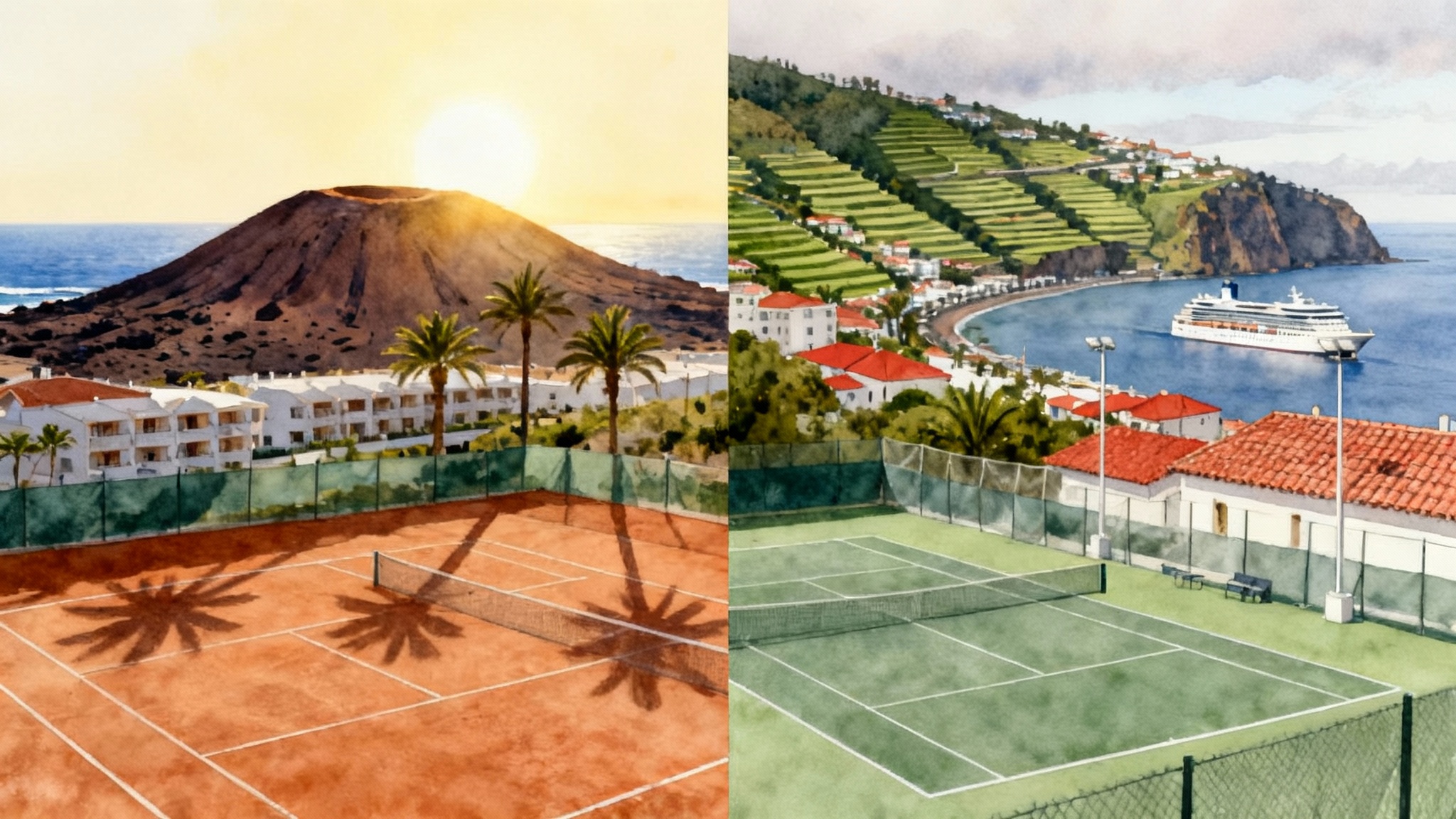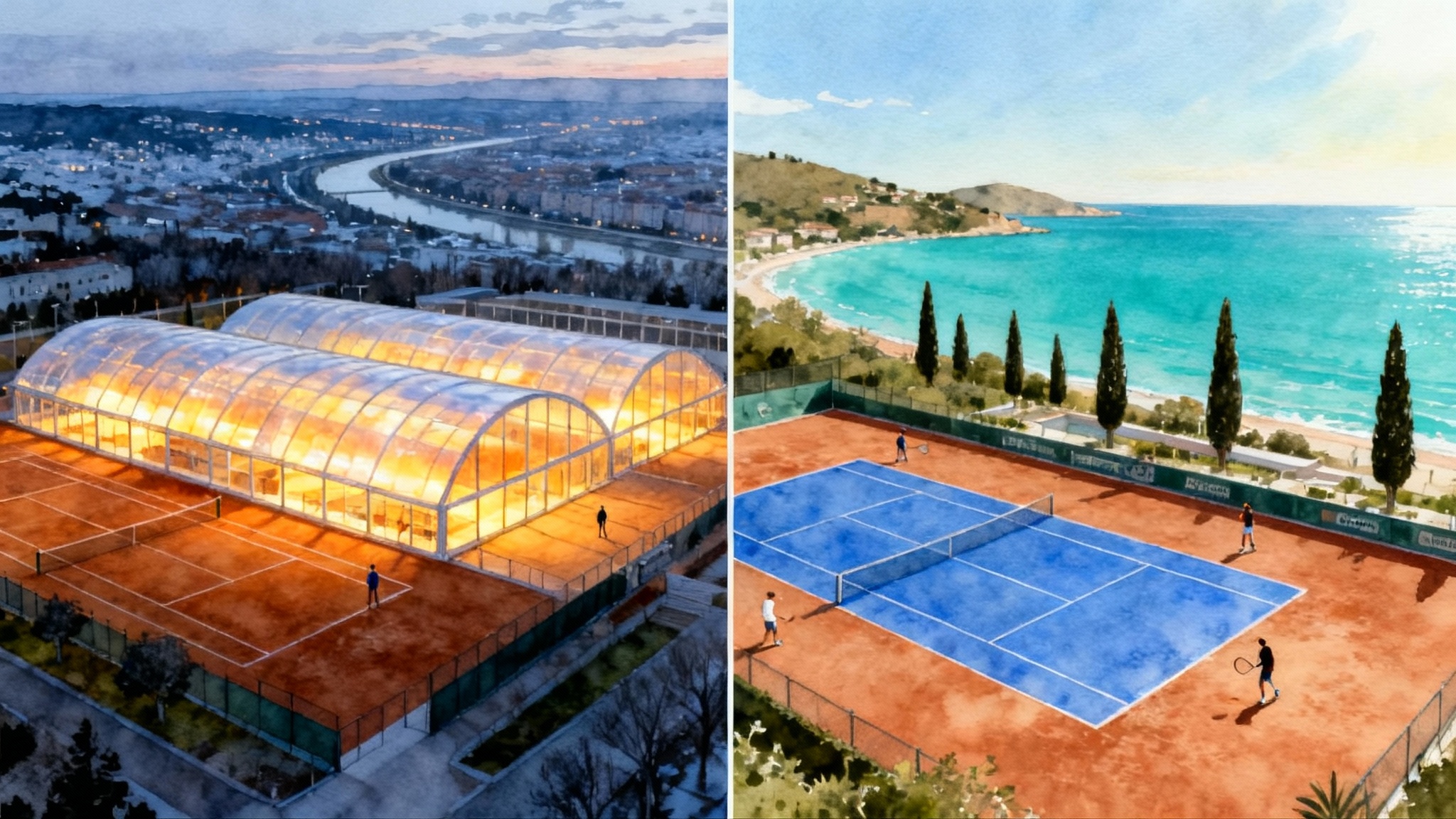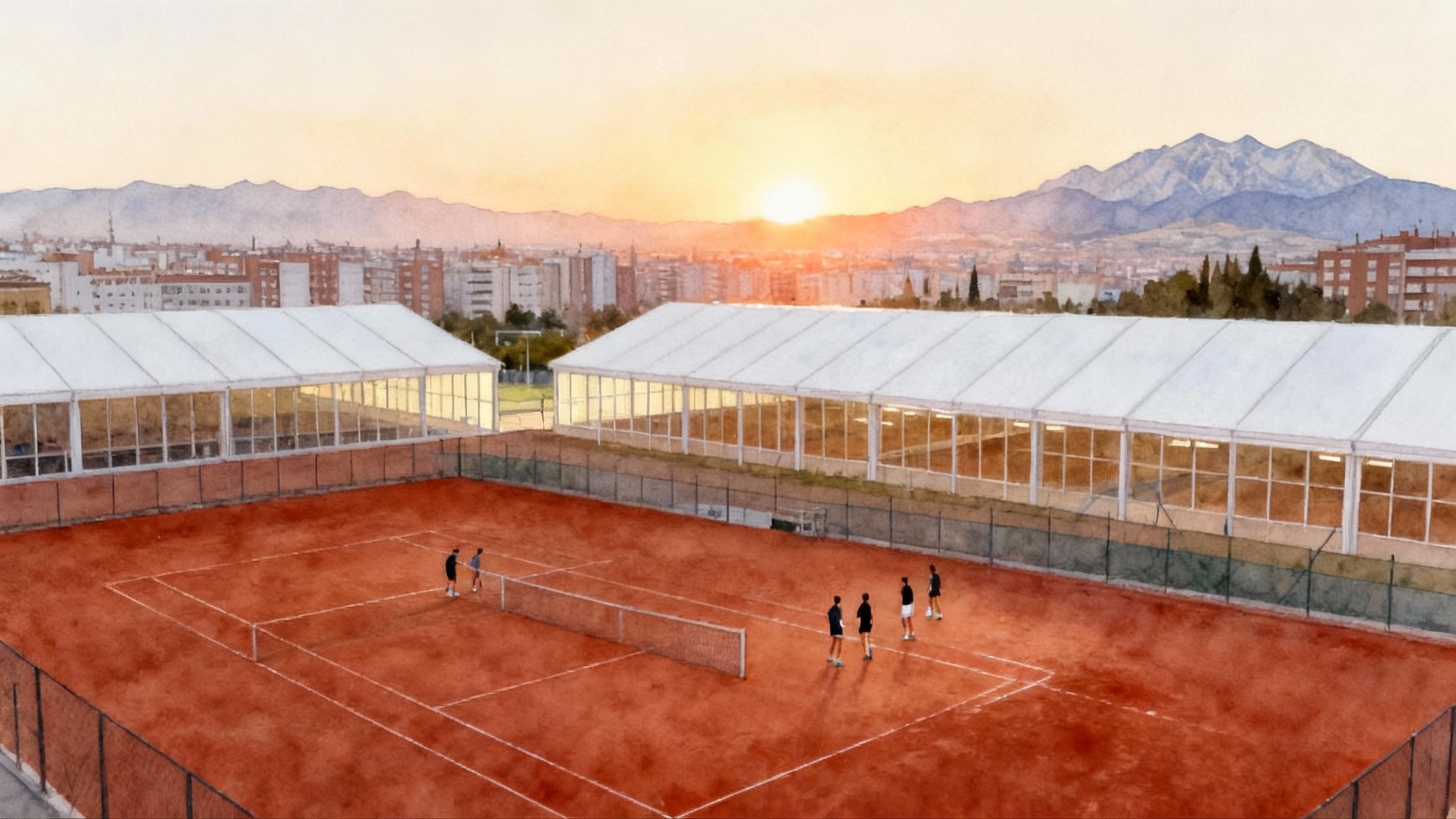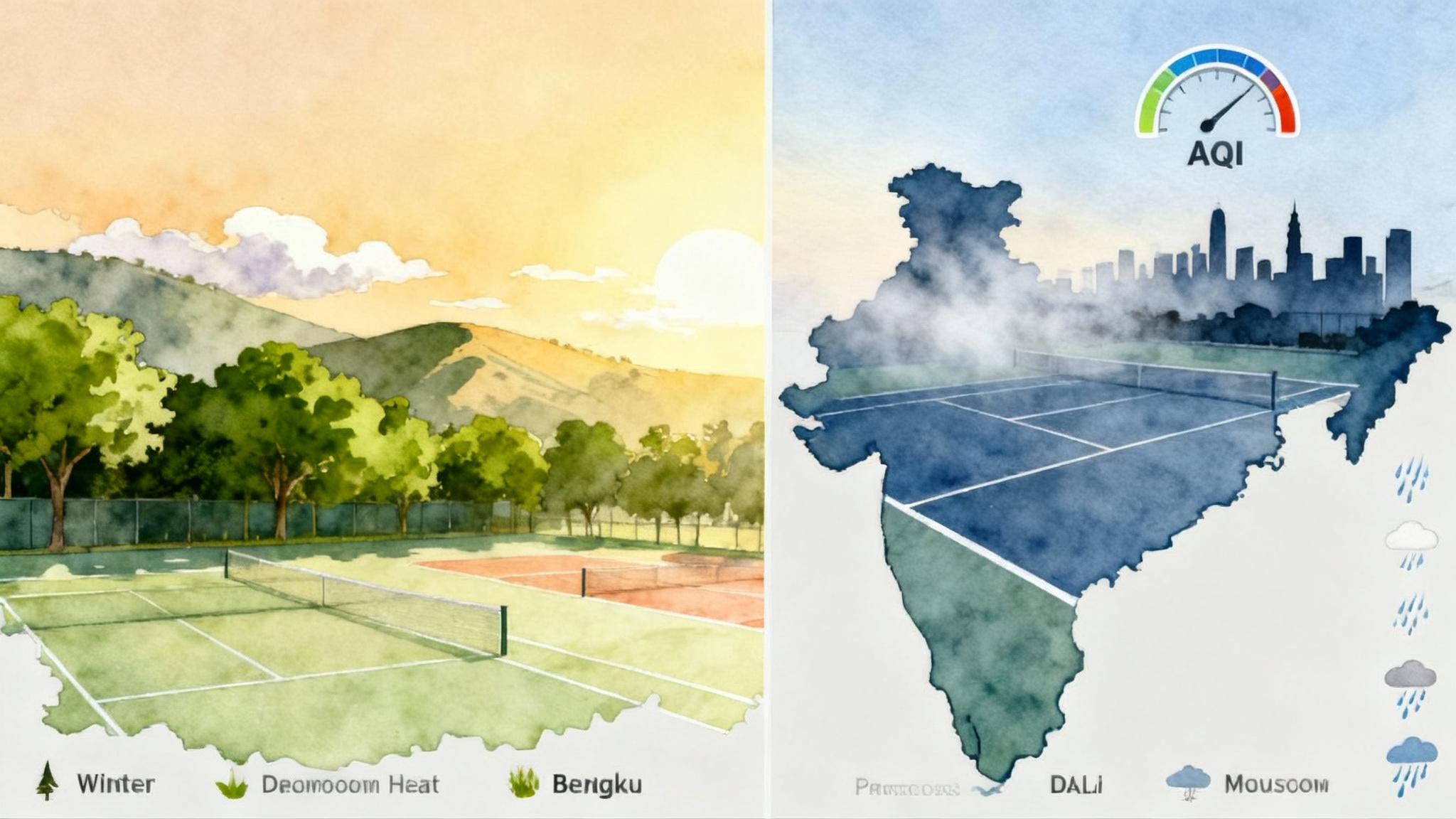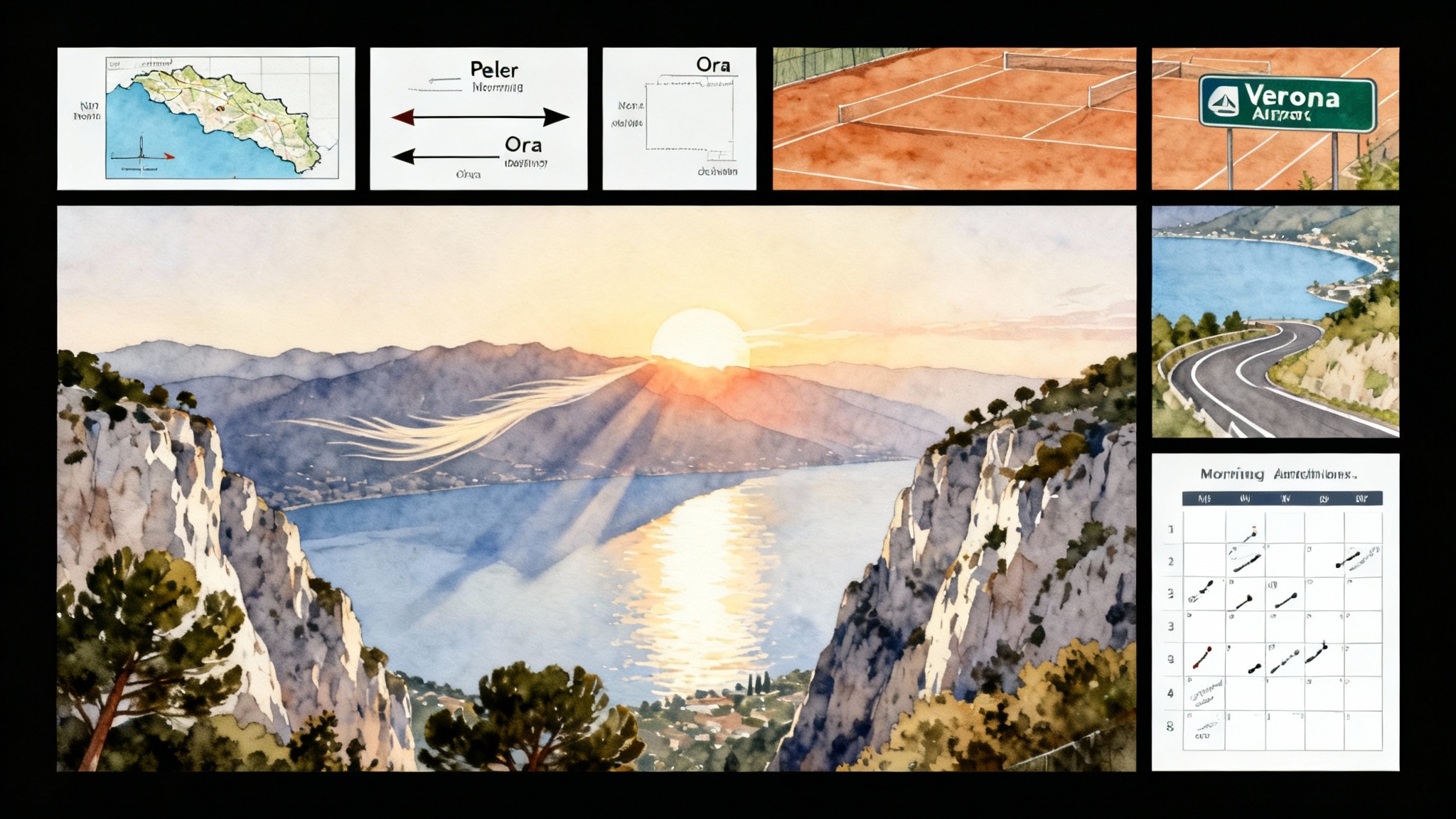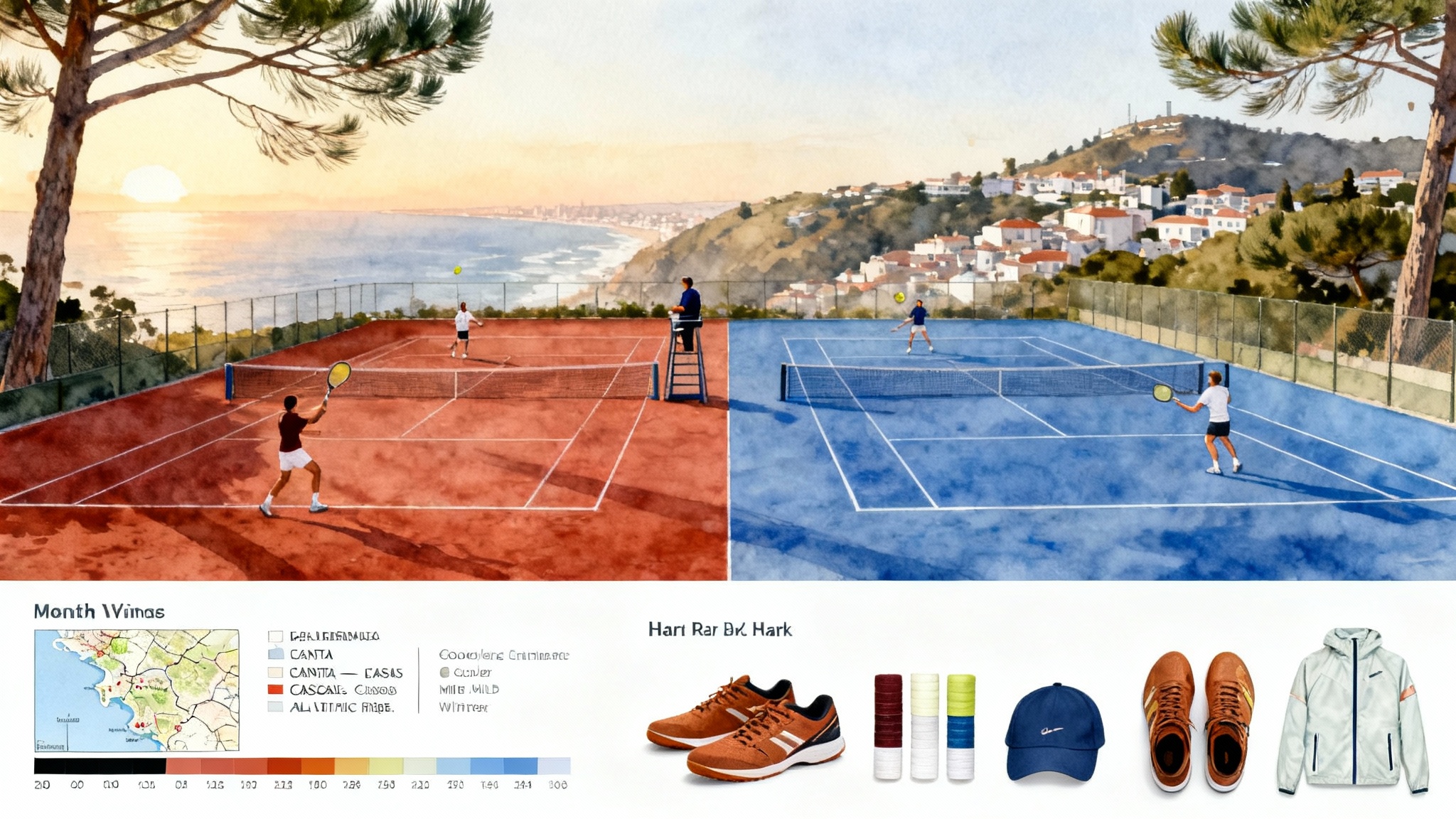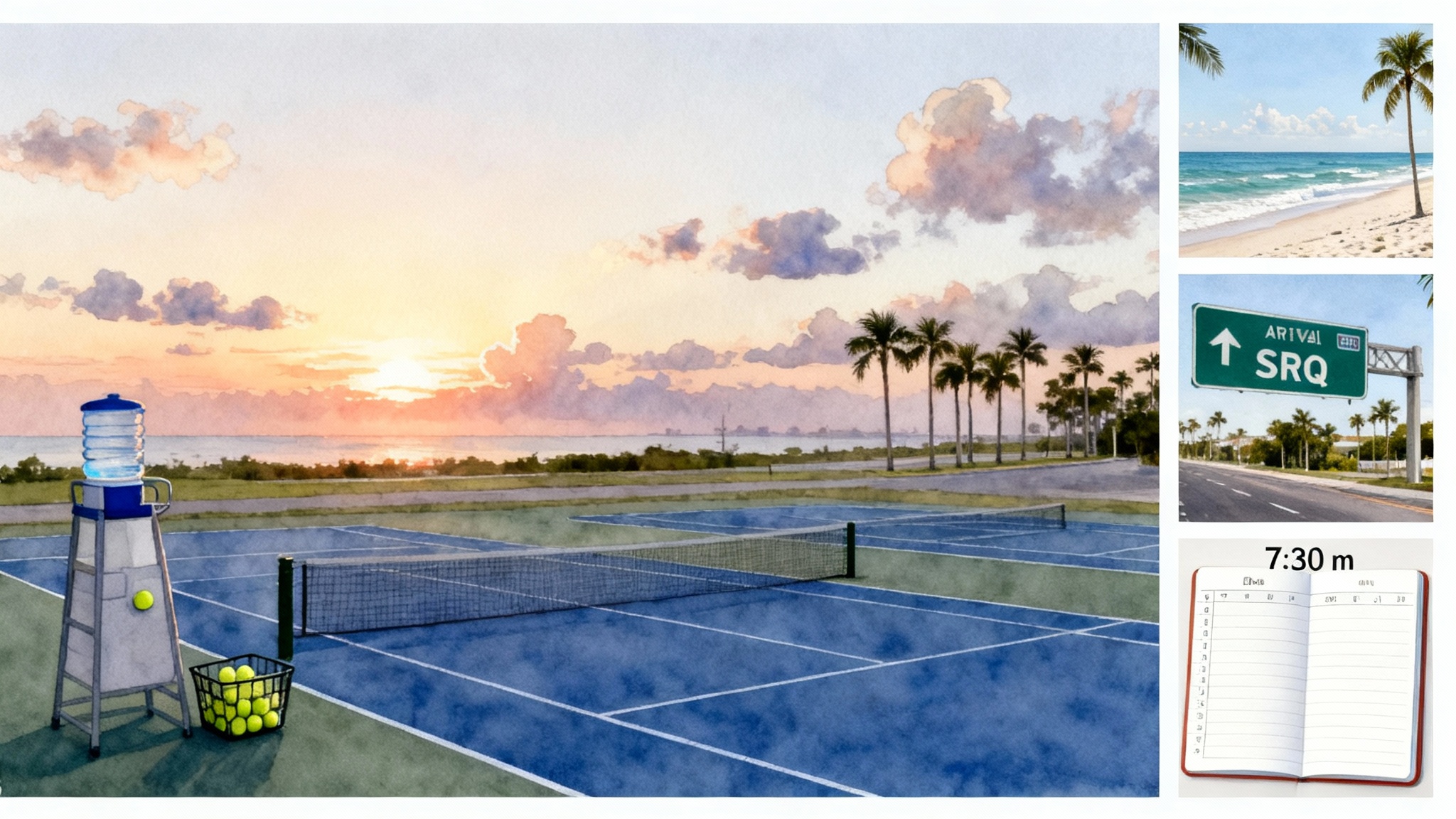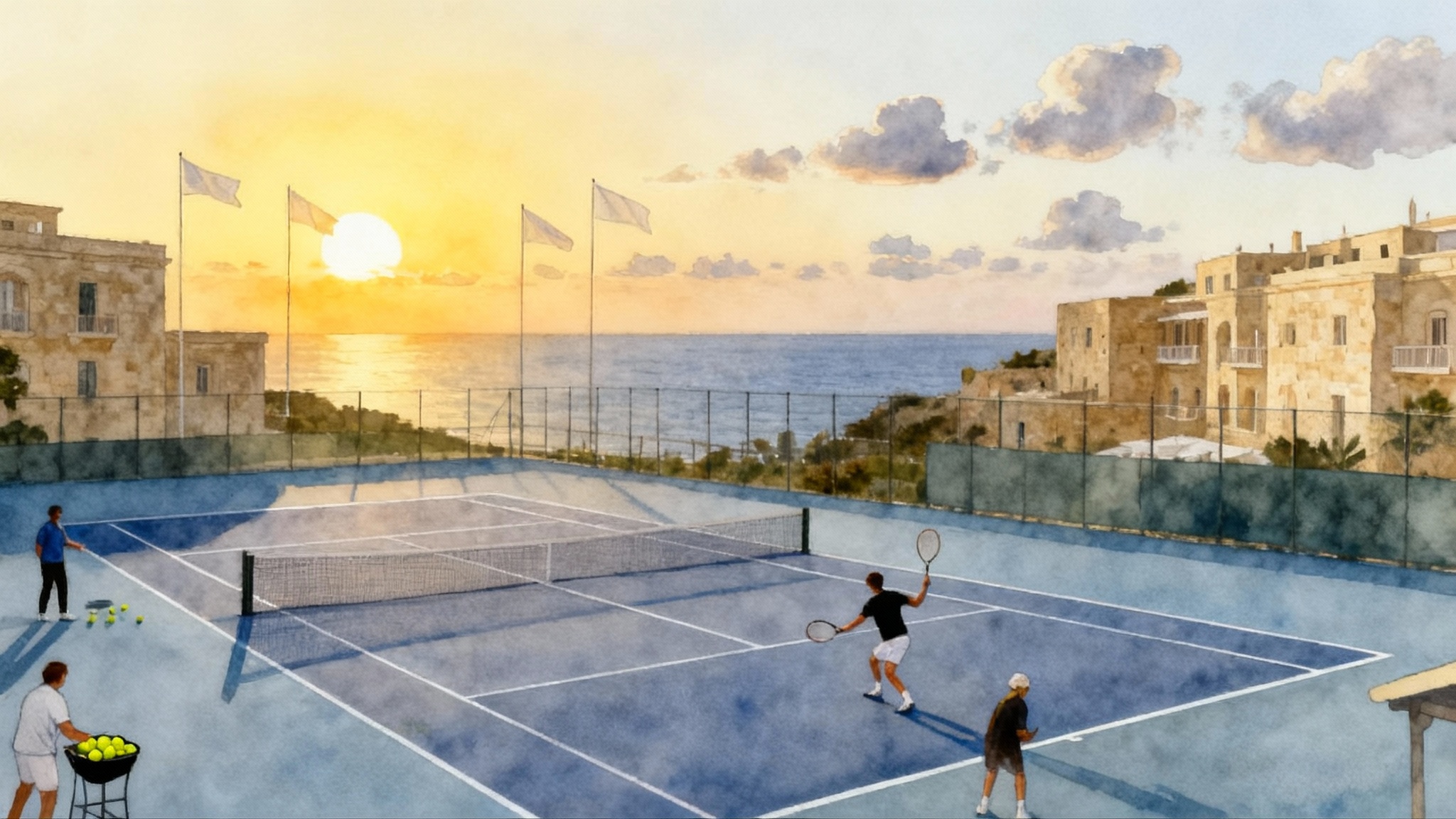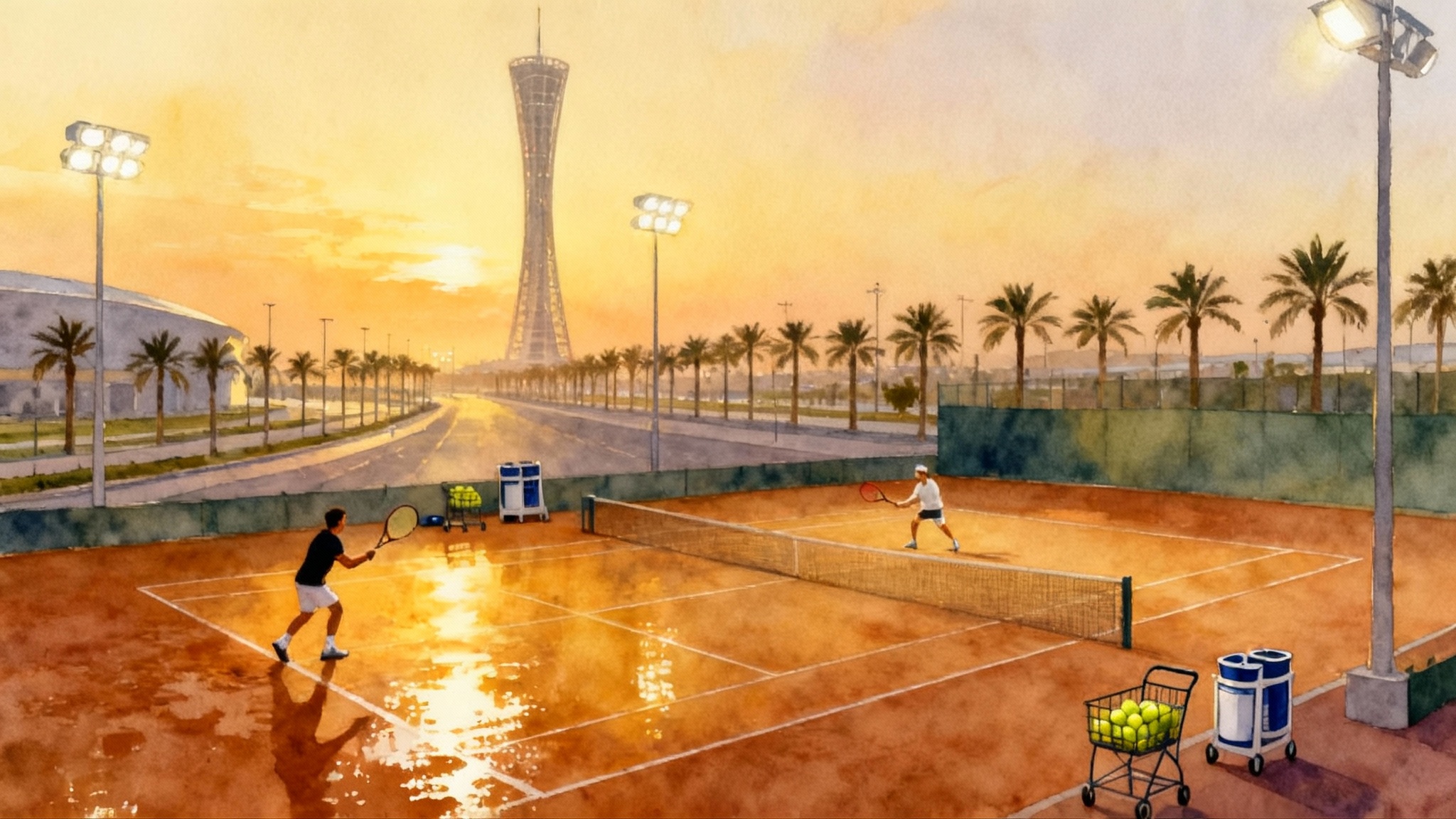Tokyo and Yokohama Spring Tennis: Train Under the Cherry Blossoms
Plan a five day spring tennis trip that blends structured sessions in Yokohama with easy public courts in Tokyo. Expect mild weather, smart rain backups, match play options, and budget tips tailored for a 2026 visit.
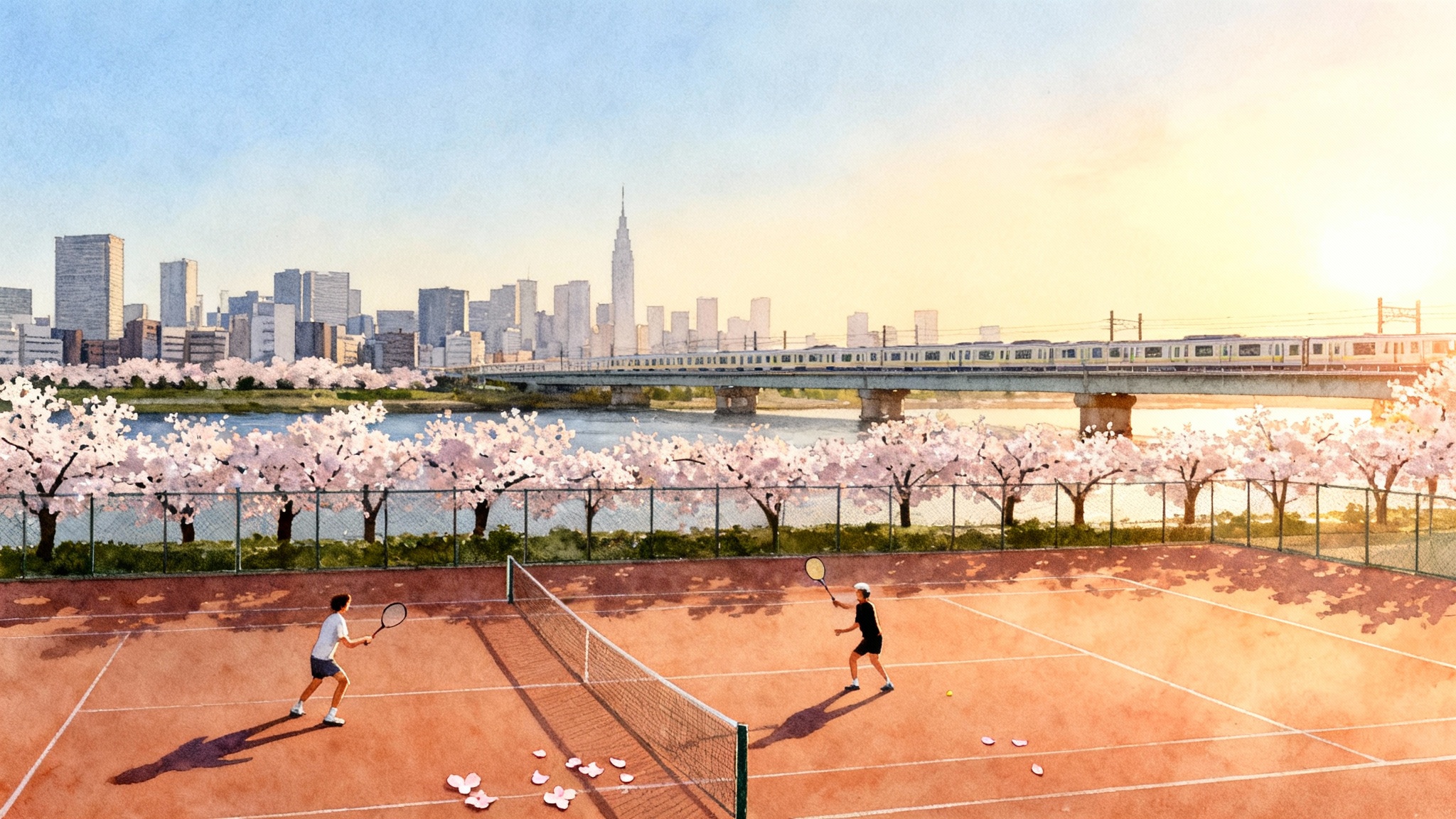
Why late March to mid-April is the sweet spot
If your calendar is flexible, circle late March to mid-April. This window delivers mild temperatures, stable daylight, and the electric atmosphere of cherry blossom season. You can train hard without battling summer humidity or winter chill, then finish sessions in time to stroll under pink canopies at sunset. Think comfortable layers in the morning, a light top by midday, and a thin jacket for the ride home.
Two practical realities make this shoulder season reliable for tennis. First, typical daytime highs are in the mid to high teens Celsius, often rising toward the upper teens and low twenties as April progresses. That means you can hit for two hours without overheating, yet you will not need hand warmers. Second, rain does come, but it usually arrives as a passing shower rather than a full-day washout. With a basic backup plan, you can protect most of your court time.
Cherry blossoms tend to peak once during this window and shift by a week depending on the year. The trees do not care about your schedule, so plan to be pleasantly surprised rather than perfectly timed. If the main wave in central Tokyo is early or late, you can still find blooms along cooler rivers or in shaded parks.
Your training base: YC&AC plus Tokyo public courts
The formula that works for visiting players is simple. Anchor your structured work at Yokohama Country and Athletic Club, then mix in flexible sessions on Tokyo’s public courts when your schedule opens up. YC&AC has a long-standing coaching culture, a friendly international community, and a setting built for focused practice. It is close to central Yokohama and a direct ride to Tokyo on the Toyoko Line, so you can train in the morning and explore new neighborhoods by afternoon. For current programs and visitor options, start with YC&AC tennis programs. For a club snapshot inside our ecosystem, see the YC&AC Tennis Academy overview.
How public courts work in Tokyo
Tokyo is dotted with public tennis facilities. Many sit inside large parks or sports centers, and the majority use sand-filled artificial turf known locally as omni court. Omni courts play a touch slower than standard hard courts and reward early preparation and clean footwork. Move like you would on a slow hard surface and use controlled acceleration through contact.
Booking varies by ward. Residents can reserve online in advance, while visitors usually do better with one of three tactics: a same-day slot that appears after a cancellation, a walk-up at the facility office when someone fails to check in, or help from your hotel concierge who can call the park office and ask about openings. If you aim for mornings on weekdays, you have a good chance of landing a court within an hour or two.
Expect to pay a modest fee per court for a two-hour block, with a small surcharge for lights after dusk. Bring a few coins or a card for onsite payment machines. Courts are clearly numbered, and staff will point you to the right gate at the start of your session.
Etiquette that keeps the day smooth
Treat public courts the way locals do and you will be welcomed back.
- Arrive ten minutes early, check in at the office, and be ready to enter on time.
- Wear all-court or omni and clay–style shoes. Deep herringbone clay soles can track sand, and ultra-flat hard court shoes can feel slick. If in doubt, a standard all-court sole works.
- Warm up on your court only, not in aisles or on adjacent baselines.
- When points stray, roll balls safely under the net to the right court. Do not scoop or sky-hook balls across other players.
- After play, return drag mats, brushes, and court tools to their racks. If there is a line brush, sweep the lines you scuffed.
- Keep coaching volume modest. Many courts sit near playgrounds and walking paths.
Indoor rain backups that actually work
You do not need to gamble your week on a perfect forecast. Set a simple hedge.
- Identify one indoor or covered option near your base that allows pay by the hour. Tokyo and Yokohama both have private tennis schools and city sports centers with covered or indoor courts. Even one hour under a roof protects your technical progress on a rainy day.
- If your main session is at an outdoor public court, add a provisional indoor hour later in the day. Cancel the indoor slot by the facility’s deadline if skies clear. Staff will tell you the cancellation cutoff when you book.
- YC&AC coaches can often shift to technical footwork, fitness, or video review when a shower passes through. Ask in advance what wet weather modules they offer.
A five-day training and sightseeing plan
This is a practical template for a first trip. Adjust time blocks to match your energy and the blossoms in bloom.
Day 1: Yokohama fundamentals and Minato Mirai
- Morning: Arrival shakeout. Book a ninety-minute fundamentals session at YC&AC. Keep drills simple: first-serve targets, crosscourt backhands, mid-court approach and volley. Ask your coach to film ten minutes of serve from side and back angles.
- Lunch: Head to Motomachi or the waterfront for a quick bowl of noodles or a sandwich. Keep it light.
- Afternoon: Easy sightseeing around Minato Mirai, the Red Brick Warehouse, and Yamashita Park. Walk, stretch, and beat jet lag with sunlight and movement.
- Evening: Early dinner near your hotel. Lay out gear for Day 2.
Day 2: Public court rhythm and Shinjuku Gyoen blossoms
- Morning: Ride the Toyoko Line from Yokohama to Shibuya. Transfer to a park with public courts and aim for a two-hour block. Use the first thirty minutes for an extended dynamic warm-up and footwork ladders. Then run a simple pace ladder: ten-ball rally at 60 percent, then 70, 80, and settle at your match tempo.
- Lunch: Bento in the park. Hydrate. Switch to a fresh grip.
- Afternoon: Stroll Shinjuku Gyoen or another major garden. If the main trees are not peaking, find a smaller river walk where petals collect in the current. The contrasts are often more beautiful than the postcards.
- Evening: String check. If tension drifted on the slower omni surface, plan a restring tomorrow. For technique cues on slow courts, compare notes with our Madrid shoulder-season clay guide.
Day 3: Serve day at YC&AC and a Yokohama garden
- Morning: Back to YC&AC for a serve plus first-ball session. Structure it as ladders of external focus: aim small on a corner cone, then shift to a cue like “toss to eye level” or “shoulder-high finish” for five minutes, then return to aiming small. Finish with thirty minutes of point play with serve starts.
- Lunch: Café in Yamate or a quick stop in Chinatown. Keep caffeine moderate if you plan to play again late afternoon.
- Afternoon: Sankeien Garden during golden hour. Walk the inner paths and take a few photos from the wooden bridges.
Day 4: Match play and the Meguro River
- Morning: Secure a public court block for practice sets. If you have not lined up opponents yet, do live-ball patterns with your training partner: four-ball crosscourt, fifth ball line to a hand-fed target, recover neutral.
- Afternoon: Reserve time for official match play if you found an event, or schedule a friendly two-set match with tiebreaks on your public court block. Record score and a few video clips to gauge tactics under pressure. Use routines from our Indian Wells match-play playbook.
- Evening: Meguro River at dusk. Petals on water are as memorable as trees in full bloom.
Day 5: Tournament simulation, souvenirs, and an early night
- Morning: Tournament simulation at YC&AC or a booked public court. Two sets with a full warm-up, ball change at 1 hour, and no coaching during play. Use the exact routine you would use at your home club.
- Afternoon: Last string job or gear stop. Windsor Racket Shop has multiple locations and is known for reliable stringing. Pick up a small bag of overgrips and a can of balls to take home for a fun souvenir hit.
- Evening: Pack early. Plan an easy dinner and a short walk. Review the best five minutes of video from the week and note one technical focus and one tactical focus to bring back home.
Travel notes for the week
- Base yourself near the Toyoko Line, which links Yokohama and Shibuya in roughly thirty minutes. Ebisu, Nakameguro, and Daikanyama on the Tokyo side, or Motomachi-Chukagai and Minato Mirai on the Yokohama side, all make commutes simple.
- Keep one flexible public court window each day. That is your training insurance in peak blossom season when crowds fluctuate.
Where to find match play quickly
If you want official, level-based competition, check Universal Tennis events in Tokyo. The Universal Tennis Rating platform lists verified events, drop-in match sessions, and leagues. It sorts entries by level rather than strict age groups, which helps travelers plug into the right match quality with limited scouting. Search for Greater Tokyo or Kanagawa listings and look for events with flexible check-in windows.
Beyond UTR events, visitors sometimes find partners through adult tennis schools, community meetup groups, or hotel concierges who know local coaches that can arrange practice sets. University tennis circles are welcoming but usually organized for students, so treat any invitation as a bonus rather than a plan. If you do reach out, a simple message works: you are visiting for a week, you have a target level, you hope for a friendly set at a public court, and you are flexible on time and place.
Family plans versus adult-only itineraries
Families can keep the same training core and add low-effort wins nearby.
- Near YC&AC: Sankeien Garden is a calm walk with ducks and ponds. The Cup Noodles Museum and the waterfront promenade keep kids engaged within a short taxi ride.
- In Tokyo: Yoyogi Park and Komazawa Olympic Park have playgrounds and lawns near courts. Parents can rotate short-court games with younger players while older siblings rally.
- Food: Department store food floors called depachika turn meals into a scavenger hunt. Let kids pick their own bento boxes and desserts.
Adult-only trips can extend the training day. Add an early morning conditioning loop on park stairs, a late afternoon serve bucket at a public court, or a quiet recovery evening in a hot spring style bath. If you go the bath route, choose a simple neighborhood sento with clear rules, shower thoroughly before entering shared baths, and respect quiet zones.
Budget tips for a 2026 spring trip
Set your budget in three layers: fixed, variable, and training.
Fixed costs
- Flights: From the United States, spring fares rise as blossoms approach. Booking four to six months ahead typically yields better prices than last-minute buys. If you have airline miles, check both Tokyo airports since Haneda and Narita sometimes price differently on the same route.
- Lodging: Pick a base on the Toyoko Line to cut commuting costs. Business hotels near stations offer compact rooms with quiet and clean basics. Two or three nights in Yokohama and two in Tokyo works well. Apartments can be good value if you want a washing machine for sweaty gear.
Variable costs
- Food: Convenience stores carry solid on-the-go options. Expect fair value for noodles, rice bowls, and grilled fish. Splurge once on a special meal and balance the rest with simple breakfasts and park picnics.
- Transport: Buy a rechargeable transit card such as Suica or Pasmo on arrival and reload as needed. You do not need a countrywide rail pass for this itinerary since you are moving inside Greater Tokyo and Yokohama.
Training costs
- Court fees: Public courts remain affordable. Plan for a modest fee per two-hour block, plus a small add-on for lights if you play after dark. Booking two public blocks during the week keeps your training volume high without breaking the budget.
- Coaching: Rates vary by facility and coach seniority. Expect private lesson pricing to be higher at private clubs and lower at community gyms. If you want two lessons plus one shared session, reserve the private work early and keep the shared session flexible.
- Balls and stringing: Bring two new cans and two fresh sets of your usual string. If tension drop on omni surprises you, restring once midweek. Specialty shops can often return frames the same day if you drop them before lunch.
Money notes for 2026
- Exchange rates fluctuate. Bring a debit card that waives international fees and withdraw at the airport or convenience stores. Keep a small stash of coins for lockers and pay machines at public facilities.
- Mobile payments are common, but small tennis offices still like cash for quick transactions.
What to pack for omni and spring weather
- Shoes: All-court or omni and clay soles. The small sand in the turf rewards a tread that grabs without digging.
- Grips and dampeners: The air is mild, but a full week of play will chew through overgrips. Pack more than you think. Dampeners get lost, so pack two.
- Layers: A light breathable jacket, a long-sleeve top for morning warm-ups, and a short-sleeve match top for midday play.
- Sun and rain: A compact umbrella, a hat with a dark underside to reduce glare, and a small microfiber towel.
- Recovery: A light resistance band and a lacrosse ball for self care in the hotel.
Booking play without stress
A simple script keeps things easy. Pick your two priority sessions at YC&AC, then add three provisional public court blocks spread across your five days. Keep one backup indoor hour on a day with iffy weather. Each evening, confirm the next day’s plan based on energy, weather, and blossoms. You will feel in control without overscheduling.
If a facility uses a resident-first reservation system, lean on day-of openings and polite in-person requests. A smile, a simple explanation that you are visiting, and a willingness to take any open slot usually do the trick.
The final serve
A spring week across Yokohama and Tokyo works because every piece supports the next. YC&AC gives you structure, public courts give you volume, and the season itself gives you reliable practice weather and unforgettable scenery. Treat the plan like a ladder. Start with clean fundamentals in Yokohama, climb into match play in Tokyo, and step off at sunset under pale pink trees. You will return home sharper, calmer, and ready to win longer rallies.
